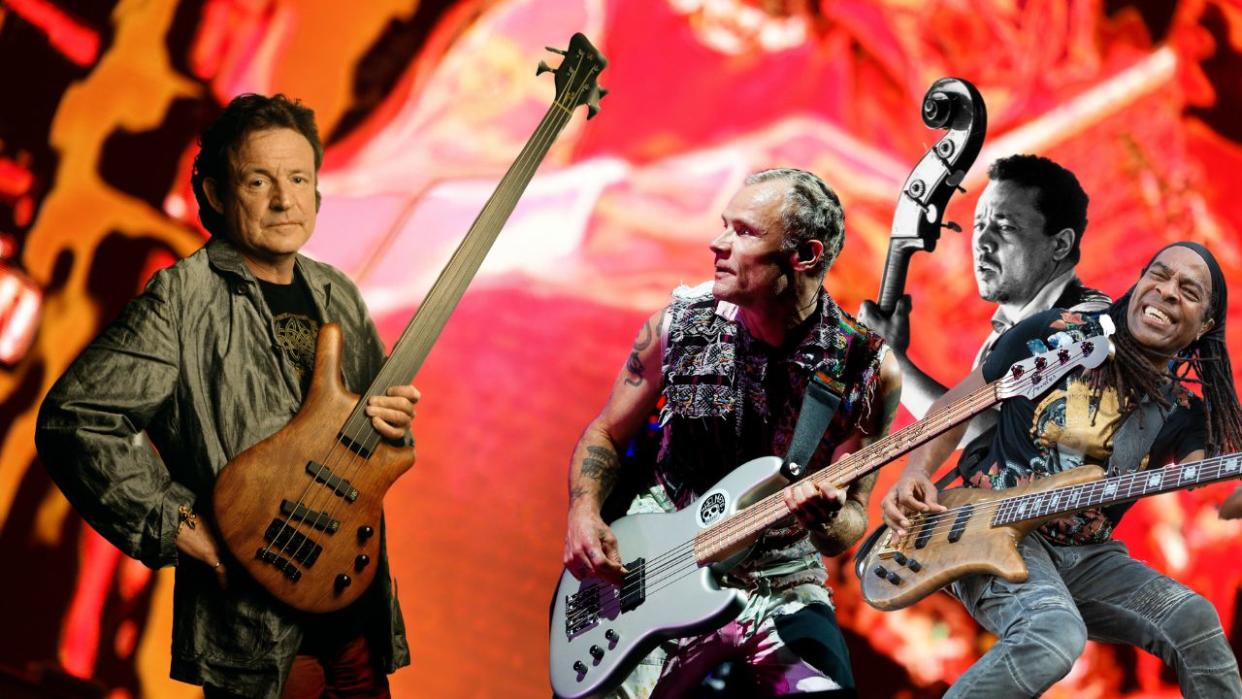“It’s hard to think who the greatest bass players are. You could say Flea, but he doesn’t need the plug!” Jack Bruce on the bass players that shaped his sound

Bass players don’t come much bigger than the late Jack Bruce. Looking back at his early days with Cream – not to mention his stints with Alex Korner, Graham Bond and the Bluesbreakers – he was one of a short list of pioneers who were challenging the traditional concept of what a bass guitarist could play. Perhaps the best way to sum up his considerable achievements is to note that, alongside his contemporaries Paul McCartney and John Entwistle, Jack Bruce is jointly responsible for the way that the bass guitar is played in modern rock music.
Looking back in 2010, Bruce told BP “I’m strange in a way as I don’t consider myself as a bass player although that’s what I do. I sing, play piano and a bit of acoustic guitar, so I don’t usually buy records because of the bass playing. I suppose The Beatles’ Rain was an influential track, but the biggest influences on me were always the jazz players.
“There was one record called The Greatest Jazz Concert Ever, and it’s Charlie Parker with Dizzy Gillespie, Charles Mingus, Bud Powell and Max Roach. I'd recommend that to anybody. Also any of the Tamla Motown records, anything by James Jamerson. Another one was The Band’s first record, Music From The Big Pink. It’s hard to think who the greatest players of today are. You could say Flea, who is a great player and a friend of mine, but he doesn’t need the plug!”
Back in 2010, on the release of his authorised biography, Composing Himself, Jack Bruce revealed the five albums that shaped his sound.
1. Johann Sebastian Bach – Great Organ Works.
“There are so many of these collections, but I’d choose anything that includes Toccata And Fugue, the famous one. If you want to know anything about bass playing, it’s all there. It’s perfection. The bass parts are contrapuntal, but they’re also melodic; if you took away the bass part the whole thing would fall apart. Those parts are great if you want to learn to play melodically. You don’t need a lot of theory to understand them; the ultimate rip-off is Procol Harum’s A Whiter Shade Of Pale. That’s just one example, though – there are hundreds of them.”
2. Dizzy Gillespie Band – Showtime At The Spotlite: 52nd Street New York City, June 1946.
“This album has Ray Brown on bass, and the particular song I’m thinking of is called One Bass Hit. This was very influential to me, because I listened to that music and loved it very much – and the very first audition I had for a big professional band, the Murray Campbell Big Band, was that piece. It was all transcribed, but they were quite impressed because I was straight out of college and I sight-read it, and I got the job. There’s a very dense Ray Brown solo right at the beginning.”
3. Charles Mingus – Mingus Ah Um.
“This is self-explanatory, really. Mingus was a really great composer and bass player, which was obviously something I wanted to emulate – I wanted to do both those things. I didn’t discover him until I was 17 or 18, and it changed my life. Also, his music was a very early fusion, if you like, of country, blues and bebop – it was very exciting. His book Beneath The Underdog is the greatest autobiography ever written. It’s full of lies and exaggerations, but why not?”
4. Various Artists – Motown 50.
“James Jamerson did everything, didn’t he? Marvin Gaye, Stevie Wonder…he’s on all those great tracks. They tried to muddy the waters a bit sometimes and say it was another bass player, but he played on 30 number ones, which is not a bad record. It’s said that he never changed his strings, which is one of two approaches to strings. I like to change mine a lot – if I’m on tour, it’s for every gig – because I like the sound and the feel of brand-new strings. But the other way is to leave them on forever.”
5. Living Colour – Stain.
“This has Doug Wimbish on it. He’s just amazing. He sums up all the great things about modern bass playing. The last time I saw him was when Living Colour played the Jazz Cafe in London, and he did this solo which was just so entertaining. The things he can do with effects are astounding. He’s taken them to a new height, which is great. It’s really hard to think who the greatest players of today are, because there’s quite a few – but he’s a bit underrated. You could say Flea, who is a great player, but he doesn’t need the plug!”

